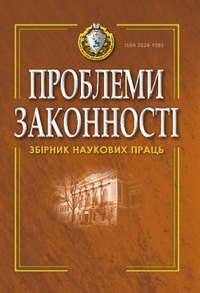Fault in tort law: Moral justification and mathematical explication
DOI:
https://doi.org/10.21564/2414-990x.141.126813Keywords:
tort, fault, fault-based liability, negligence, strict liabilityAbstract
The article has two main objectives: (1) to reveal why the fault principle is considered to be morally superior to no-fault liability in primitive law; and (2) to find out the essence of fault in modern tort law and then to express the concept of fault in the most precise manner possible, namely through math formula. It is argued that the very existence of law is contingent on freedom of human’s will. It is the human’s freedom that allows to judge human’s actions. Thus, provided that we consider tort law as a set of rules prohibiting infliction of damage and establishing liability therefor, it is fair to state that fault is a precondition of tort liability specifically because freedom is a precondition of the very law’s operation. Therefore, while establishing fault the court investigates whether the tortfeasor was free at the moment of infliction of damage. Fault denotes that formally wrongful act was committed freely. Since establishing fault is conducted after the wrongful act has been committed (it is conducted within judicial proceedings, which constitute backward-looking research), the inference follows that fault is an ex post conclusion of freedom. However, sometimes all the elements of the free-choice situation being present, the tortfeasor nevertheless cannot be deemed to be at fault. This is the case, where the tortfeasor could have avoided inflicting damage, but at excessively heavy cost. Thus, it is not enough if among the available alternatives there is one harmless; in addition, the harmless option has to be reasonable. Otherwise choosing this harmless option cannot be expected.
References
Coleman, J., Hershovitz, S., Mendlow, G. (2015). Theories of the Common Law of Torts, The Stanford Encyclopedia of Philosophy (Winter), Edward N. Zalta (ed.), URL: https://plato.stanford.edu/archives/win2015/entries/tort-theories/.
Tunc, A. (Chief ed.) (1983). International Encyclopedia of Comparative Law. Vol. 11: Torts. Brill: Martinus Nijhoff Publishers.
Jhering R. von (1875). The Spirit Of Roman Law At The Various Stages Of Its Development. Saint-Petersburg, Russian Empire: Bezobrazov’s & Co. Printshop [in Russian].
Kelsen, H. (1967). Pure Theory of Law.Berkeley andLos Angeles:University ofCalifornia Press.
Hegel, G. W. F. (1971). Philosophical Propaedeutic. In Hegel, G. W. F. Works of various years. Vol. 2 (pp. 7–209). Moskow, U.S.S.R.: Mysl’. [in Russian].
Riesenhuber, K. (2008). Damages for Non-Performance and the Fault Principle. European Review of Contract Law, 4, 119–153.
Schäfer, H.-B., Schönenberger A. (2000). Strict Liability versus Negligence. In Bouckaert, B. & De Geest, G. (Eds.). Encyclopedia of Law and Economics, Volume II. Civil Law and Economics. (pp. 597–624).Cheltenham: Edward Elgar.
Decision of Supreme Economic Court of Ukraine 14 Oct. 2010, case No. 16/100. URL: http://www.reyestr.court.gov.ua/Review/11786192.
Recommendations of the Presidium of the Supreme Economic Court of Ukraine No. 04-5/239, 29 Dec 2007. URL: http://zakon1.rada.gov.ua/laws/show/va239600-07.
Downloads
Published
How to Cite
Issue
Section
License
Copyright (c) 2018 Богдан Петрович Карнаух

This work is licensed under a Creative Commons Attribution 4.0 International License.










